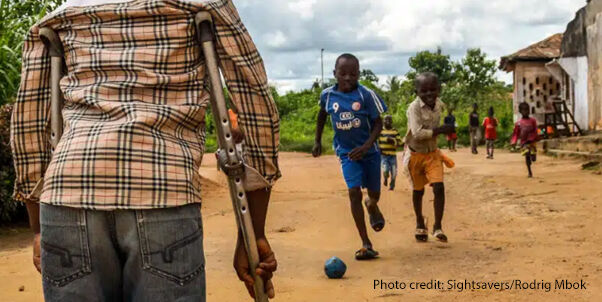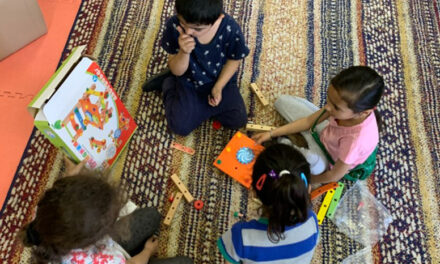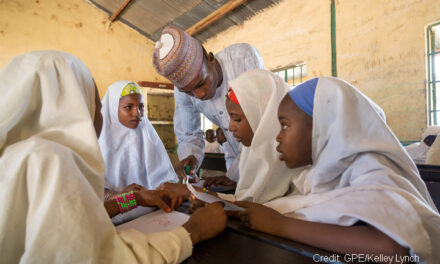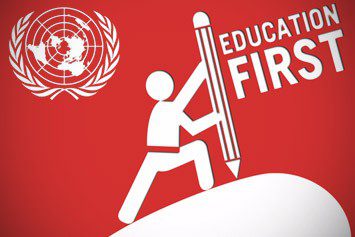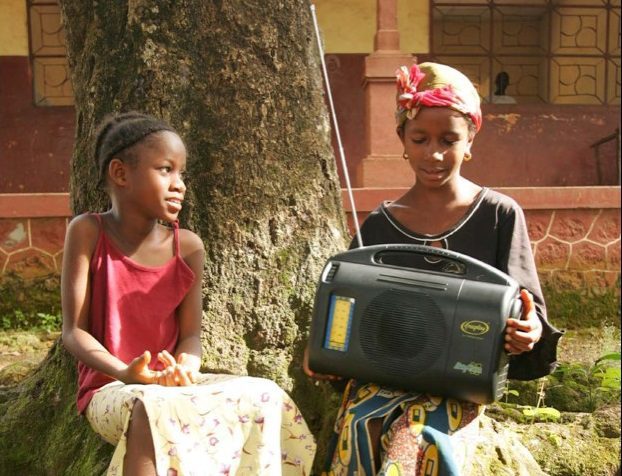This article was written by Takyiwa Danso, Inclusive Education Policy Officer at Sightsavers. It was originally published on the BOND website on 7 August 2023.
As we cross the halfway mark of 2023, the world has already been rocked by several major humanitarian crises that have impacted children’s education.
From the devastating earthquakes in Türkiye and Syria, the escalating conflict in Sudan, and the hunger crisis in East Africa, to more localised and targeted situations such as the terrifying school attacks in Western Uganda or the ongoing ban on girls’ education in Afghanistan. These emergencies follow in the wake of protracted war in Ukraine, the residual impact of the Covid-19 pandemic, and the climate crisis which is impacting us all. Consequently, the education of many of the world’s children is under extreme threat.
The scale of emergencies this year has strained education systems around the world already buckling under the weight of significant challenges, including a funding gap worsened by the Covid-19 pandemic (estimated at $100 billion) which is hindering progress in achieving Sustainable Development Goal 4.
Education Cannot Wait (ECW), the global fund dedicated to education in emergencies, has reported an alarming 12.5% of children and adolescents affected by emergencies and protracted crises over the last 12 months. Yet at its fundraising conference in February, the world’s richest countries only mustered just over half of ECW’s $1.5 billion funding target, leaving the organisation grossly under-resourced to tackle a deteriorating problem.
Now is the moment for the UK government to act decisively. Send My Friend to School’s latest campaign on Education in Emergencies, calls for the UK government to support crisis-affected countries to build and invest in inclusive, resilient and gender-responsive education systems that can withstand all hazards to protect the learning of all children during emergencies.
Current estimates indicate nearly 224 million school-aged children are impacted by emergencies or protracted crises and require urgent support, 32% of whom are out of school. Time and again it is the most marginalised children and youth who face the highest risks. The term ‘most marginalised’ is widely used, but when applying it in the context of educational disruption and its impact, it is important to unpack what we really mean by ‘the most marginalised’ and who exactly we are referring to.
Children and youth living on the margins of society are those likely to be experiencing multiple and complex intersecting challenges, such as discrimination because of their gender, disability, poverty, displacement, geographical inequity, or belonging to minority ethno-linguistic or religious groups. These are the children most likely to be excluded from education already, but when a crisis hits, these existing inequalities are even further exacerbated and often intersect.
Girls in conflict-affected countries are 2.5 times more likely to be out of school, with an increased risk of experiencing sexual and gender-based violence, early and forced marriage, and adolescent pregnancies. Children with disabilities experience intensified systemic exclusion during emergencies due to inaccessible support and evacuation plans, and limited access to regular care, medication or assistive devices. Children who are displaced or become refugees grapple with complex barriers in their new settlements including language barriers, a lack of formal identification, and managing stress and trauma.
This only scratches the surface of how much we know of the impact of emergencies on education. There is still a significant lack of evidence, knowledge and understanding on the extent to which these groups of children (and many others) are affected by crises and the impact it has on their learning. Poor, unreliable, and outdated data in crisis-affected contexts undermines our ability to identify discrepancies in children’s access to education. Without knowing who we’re counting, we don’t get the full picture of the scale of disruption. And those children at the intersection of already marginalised groups risk being completely missed.
We do not need precise data to know that education in emergencies is essential. In the darkest of times, education provides stability, protection, and a sense of normalcy for children amidst chaos. It equips them with vital skills and knowledge that build long-term resilience for themselves and their communities’ recovery. We must uphold the universal declaration that education is a human right for all children, regardless of how challenging their context. We need to set the same standards for every single child, find a way to reach them and ensure they can access learning before, during and after an emergency. Pre-existing exclusionary barriers to learning must be dismantled. This means tackling social and institutional norms that enable individuals, communities, and whole systems to ignore the needs of the most vulnerable children.
Send My Friend to School’s Education in Emergencies campaign outlines how the UK can strengthen fragile education systems to anticipate and prepare for emergencies, prioritise and protect vulnerable groups, scale up financing for education and systems, and invest in high-quality data to capture accurate, reliable and disaggregated information so we can count children and know who is missing.
We are at a critical juncture. Rather than retreating, as the global community seems poised to do in the wake of multiple complex challenges, we must redouble our efforts to ensure education is prioritised in emergency response, centring the hardest-to-reach children. We must invest more, act decisively, and ensure that our contributions effectively reach those most in need.
We owe it to children and youth around the world to ensure that they are not overlooked in our crisis responses. Our children’s future, and indeed our world, depends on the urgency and sufficiency of our actions today.

